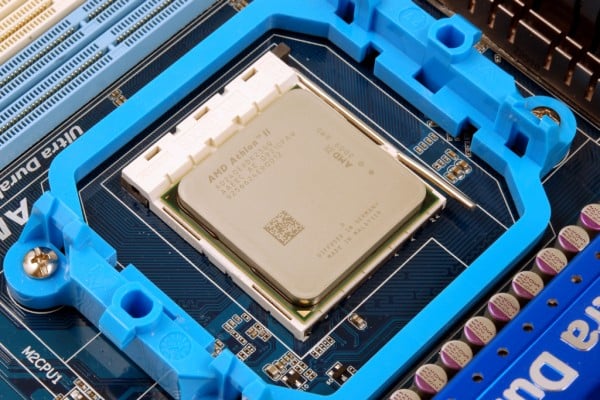AMD Athlon II X2 240e and X3 435 Mainstream CPUs
Our Test Systems & SANDRA

How We Configured Our Test Systems: When configuring our test systems for this article, we first entered their respective system BIOSes and set each board to its "Optimized" or "High performance Defaults". We then saved the settings, re-entered the BIOS and set memory timings of DDR3-1333 with 7,7,7,20 timings. The hard drives were then formatted, and Windows Vista Ultimate was installed. When the Windows installation was complete, we updated the OS, and installed the drivers necessary for our components. Auto-Updating and Windows Defender were then disabled and we installed all of our benchmarking software, defragged the hard drives, and ran all of the tests.
|
|
System 1: EVGA GeForce GTX 280 WD150 "Raptor" HD Windows Vista Ultimate |
System 2: |
|
|
To prevent the page from getting too cluttered with SANDRA charts, we've run these tests only on AMD's "new" processors being released today, the dual-core Athlon II X2 and triple-core Athlon X3. The other models hitting the scene feature different clock speeds as well as power savings. When compared with one another, the extra core and 100MHz speed advantage that the X3 435 makes a noticeable difference in every SANDRA benchmark we ran. While both processors provide respectable results, the tri-core Athlon is clearly the superior performing chip.
Testing began with SiSoftware's SANDRA XII, the System ANalyzer, Diagnostic and Reporting Assistant. We ran four of the built-in subsystem tests that partially comprise the SANDRA 2009 suite with AMD's new Athlon II series processors (CPU Arithmetic, CPU Multimedia, Memory Bandwidth, and Cache and Memory). All of the scores reported below were taken with the processors running at their default clock speeds of 2.8GHz and 2.9GHz, respectively, with 4GB of DDR3-1333 RAM running in unganged mode.















